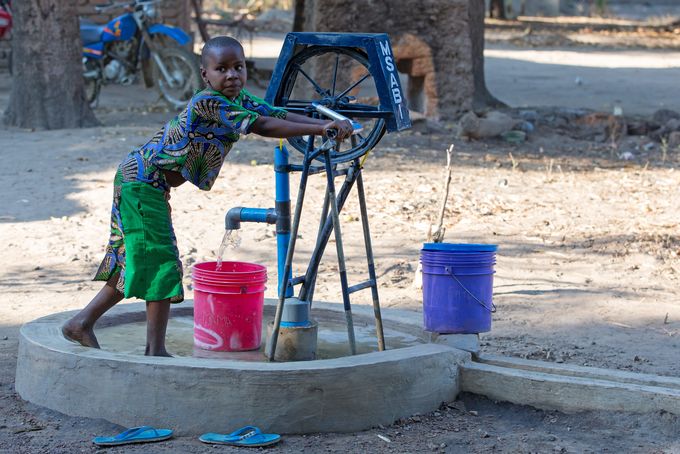More than half of the global population is estimated to lack safe drinking water services in a study published yesterday in the journal Science. The results are depicted in a map that researchers compiled using machine learning based on data from household surveys and data derived from earth observations. The study was led by the Swiss Federal Institute of Aquatic Science and Technology (Eawag) and supported by Swiss TPH, WHO, UNICEF and ETH Zurich.

Only one in three people in LMICS uses safely managed drinking water services. (Photo: Joachim Pelikan/Swiss TPH)
Access to safe drinking water is a human right and one of the United Nations' Sustainable Development Goals. However, data on the number of people using safely managed drinking water services is lacking for more than half of the world's population. "With our work we aim to help close this information gap," said Esther Greenwood, PhD student at Eawag and lead author of the study funded by the Swiss National Science Foundation and published in the peer-reviewed journal Science.
The researchers developed models using machine learning to estimate the use of safely managed drinking water services in 135 low- and middle-income countries (LMICs). The team used household survey data collected by UNICEF that included information on over 60,000 households in 27 countries between 2016 and 2020, geospatial data derived from satellite data, as well as airborne and land-based data.
A main finding of the study: only one in three people in LMICs used safely managed drinking water services in 2020. The study also found that fecal matter polluted the drinking water of almost half of the population in these countries, and a third of people needed to collect water from a shared water point. The global maps produced by the study show where the drinking water services are lacking: In rural areas of low-income countries with high temperatures and strong seasonal fluctuations in rainfall.
The maps suggest that in several countries in sub-Saharan Africa, less than 10% of the populations used safely managed drinking water. "We estimate that over four billion people worldwide do not use adequate drinking water services," summarized Greenwood. This is a notable result because this figure is more than twice as high as the previous estimate of the WHO and UNICEF. "The number of people whose basic human right to safe drinking water is not being met may therefore be significantly underestimated." said Greenwood.